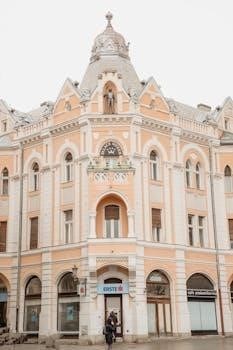The Giants of Mandurah, created by Thomas Dambo, are a series of large, wooden sculptures hidden throughout Mandurah and the Peel region. This unique, free outdoor exhibition engages visitors with the environment through a giant hunting game. The sculptures are made from recycled materials and invite exploration.
What are the Giants of Mandurah?
The Giants of Mandurah are a collection of five majestic, larger-than-life wooden sculptures crafted by the renowned Danish recycle artist, Thomas Dambo. These impressive figures, reaching up to five meters tall, are not just art installations; they are part of an interactive outdoor experience. Created from recycled materials, these giants are strategically placed in secret locations around Mandurah and the Peel region of Western Australia, inviting visitors to embark on a unique treasure hunt. This free exhibition celebrates the natural beauty of the region, including its wetlands, waterways, and bushland, and encourages people to connect with the environment. The giants serve as protectors of the environment and engage with stories provided by the local community. Each giant is unique, with its own personality and story, adding to the magical and whimsical world created by Dambo. The experience is designed to be a game where visitors collect symbols from the first five giants to discover the location of the final, super-secret giant.
The Creator⁚ Thomas Dambo
Thomas Dambo, a world-renowned Danish artist, is the creative mind behind the Giants of Mandurah. He is celebrated for his unique approach to art, utilizing recycled materials to construct large-scale, whimsical sculptures. Dambo’s work often incorporates a storytelling element, inviting viewers to engage with his creations on a deeper level. His art is not confined to galleries; instead, he prefers to place his sculptures in natural environments, encouraging people to explore and interact with art in unconventional ways. With the Giants of Mandurah, Dambo has brought his signature style to Western Australia, creating an interactive experience that blends art, nature, and adventure. His focus on sustainability and environmental awareness is evident in his choice of recycled materials. Dambo’s artistic vision is to create something beautiful and thought-provoking from discarded items, while also inspiring a sense of wonder and appreciation for the natural world. The Giants of Mandurah perfectly showcase his ability to transform repurposed wood into captivating works of art.

Exploring the Giants’ Locations
The Giants of Mandurah are hidden in secret locations throughout the region, inviting visitors on an adventure to discover them. Each giant has a unique setting and offers varying levels of access, adding to the thrill of the hunt.

Initial Clues and the Mandurah Visitor Centre

Your adventure to find the Giants of Mandurah begins at the Mandurah Visitor Centre, located at 75 Mandurah Terrace. This is where you can collect your free Travellers Companion, which serves as your essential guide and map for the giant hunt. The booklet contains QR codes and Google Map coordinates to help you locate the parking areas near four of the giants. This resource is designed to assist visitors in navigating the various locations. The visitor centre provides the initial clues, setting the stage for your exploration. Here you will be introduced to the game and its rules. The centre is also a great resource for general information about Mandurah and its attractions. The Travellers Companion also shares the folklore, culture, and natural beauty of the region. Be sure to download the free map if you prefer a digital resource.
Santi Ikto⁚ Location and Access
Santi Ikto, one of the Giants of Mandurah, is located near Calypso Drive in Halls Head, approximately a 10-minute drive from the Mandurah Visitor Centre. To access this giant, drive to the parking area at the end of Calypso Road. From there, follow the path south, past the toilet block. Alternatively, for a shorter walk, you can park at the Daydream Plaza Halls Head car park. The trail to Santi Ikto is about 1.3 kilometers return and is considered moderate in difficulty. The walk from the Calypso Road parking area takes about 20 minutes. The trail surface is grade 3. This location is generally suitable for most ages and fitness levels, providing a relatively accessible introduction to the giant hunt. Its convenient location and proximity to the visitor centre make it a popular starting point.
Little Lui⁚ Location and Access
Little Lui, another of the enchanting Giants of Mandurah, is nestled within the Mulga Park Parklands. The best access point to reach Little Lui is by parking at the car park situated on Lake Valley Drive, adjacent to Black Swan Lake Park. The trail leading to Little Lui is a crushed limestone path that meanders through bushland, offering a pleasant walk for visitors. The surface is relatively flat, with no slopes, making it a suitable trail for most people. This location is easily accessible and is designed for all visitors, including those using wheelchairs with assistance. The path is well-maintained, ensuring a smooth journey to encounter the giant. The surrounding bushland provides a scenic backdrop, enhancing the experience. Little Lui’s location within the parklands makes it an enjoyable stop on the giant hunt.
Yaburgurt Winjan Cirkelstone⁚ Location and Access
Yaburgurt Winjan Cirkelstone, one of the Giants of Mandurah, is situated at Coodanup, offering a relatively accessible experience for visitors. The trail to reach this giant is designed to be suitable for all, including those using wheelchairs with assistance. The path surface consists of crushed limestone, a relatively stable material that is easy to navigate. Notably, the trail is without slopes, making it a gentle walk for people of varying fitness levels. This ensures that many can enjoy the experience of discovering Yaburgurt Winjan Cirkelstone. The location at Coodanup provides a straightforward route, meaning that the giant is easy to find. It is a great choice for those looking for an accessible and family-friendly location. The easy trail contributes to the overall enjoyment of the giant hunt, allowing visitors to focus on the art and the surrounding environment.
Jyttes Hytte⁚ The Secret Location
Jyttes Hytte, unlike the other Giants of Mandurah, is located at a secret location, making the journey to find him a unique adventure. This giant stands guard with a spear in Yalgorup National Park, the largest national park on the Swan Coastal Plains, a short drive south of Mandurah. Finding Jyttes Hytte is the final puzzle piece in the giant hunt, requiring visitors to collect clues from the other giants to unlock his whereabouts. The location is intentionally kept secret to add an element of mystery and excitement to the quest. This giant does not have a QR code, distinguishing him from the others. The hidden nature of the location is part of the fun, as it requires visitors to use their problem-solving skills. The journey to find Jyttes Hytte is rewarding and adds a memorable experience.
Accessibility and Trail Information
The Giants of Mandurah locations offer varying levels of accessibility, catering to a wide range of visitors. Some trails are designed to be accessible for wheelchair users with assistance, featuring flat, crushed limestone surfaces without slopes. For example, the trail near Black Swan Lake in Lakelands is suitable for all visitors, including those using wheelchairs. However, it’s important to note that certain locations may involve short steep hills and require more physical exertion. Always check the specific trail information for each giant before your visit. The trail to Santi Ikto, for instance, has a moderate difficulty level with a grade 3 rating and a 1.3-kilometer return distance. Some locations are primarily bitumen surfaces. The individual needs of each visitor should be considered before embarking on the giant hunt to ensure an enjoyable and safe experience.

Practical Information for Visitors
To fully enjoy the Giants of Mandurah, visitors should utilize the free Travellers Companion and map, available at the Mandurah Visitor Centre or for download. These resources provide essential clues, parking locations, and trail information for a successful giant hunt.
Using the Travellers Companion and Map
Embarking on your Giants of Mandurah adventure begins with acquiring the essential Travellers Companion and map. These free resources, available at the Mandurah Visitor Centre, or as a downloadable PDF, are your key to unlocking the locations of the hidden giants. The Travellers Companion is not just a map; it’s a guidebook that enriches your experience with folklore, cultural insights, and details about the natural environment. It includes QR codes and Google Maps coordinates, guiding you to the closest parking areas for each giant. The map visually represents the locations, helping you plan your route effectively. By using these tools, you transform your visit into an engaging treasure hunt. The Travellers Companion also provides clues, which are necessary to solve the final puzzle and uncover the secret location of the last giant. Ensure you download it or pick it up before you start your journey, making sure you have everything you need at your fingertips to find the Giants of Mandurah. This comprehensive guide helps you navigate the trail system and fully appreciate the artistry and message behind the exhibition. The map is especially helpful in understanding the layout of the trails and surrounding areas.
Transportation and Parking
Accessing the Giants of Mandurah requires planning, as they are situated in various locations around Mandurah and the Peel region, not directly in the city center. Transportation is essential, as the giants are not within walking distance of each other or the city center. Most visitors will need to drive, using their own vehicle to reach the start of each trail. Parking is available near each giant, but specific locations vary. The Travellers Companion and map provide guidance on where to park, often directing you to nearby car parks. Public transportation options are limited for reaching these locations, making personal vehicles the most practical choice. It’s important to note that even with parking nearby, there is still a short walk to reach each giant. The provided QR codes and Google Maps coordinates in the Travellers Companion are invaluable for navigating to the correct parking spots. Be prepared for a small walk to each sculpture, even after parking at the designated spots. Plan your trip with the understanding that you must drive between each location and factor in walking time to reach the giants.
Maintenance and Temporary Closures
The Giants of Mandurah, being outdoor art installations constructed from recycled materials, require regular maintenance to ensure their preservation and safety. These maintenance periods can result in temporary closures of specific giant locations. Visitors should be aware that the giants are not permanent fixtures and may be subject to periodic TLC, which could restrict access. It’s advisable to check official sources, such as the Mandurah Visitor Centre website or social media channels, before planning a trip to see the giants. The sculptures may be temporarily inaccessible for periods of time during their maintenance, and this could impact your itinerary. These closures are necessary to ensure that the giants remain safe and enjoyable for all visitors. It is important to be flexible with your plans, as you may find that one or more of the giants are not open during your trip. Planning for potential closures and checking for updates before your trip will ensure a smoother experience. Keep in mind that the maintenance is a necessary part of keeping the experience enjoyable for all visitors.
The Giants’ Purpose and Environmental Message
The Giants of Mandurah serve as more than just impressive art installations; they carry a profound environmental message, designed to engage the community with nature. Created by recycle artist Thomas Dambo, the giants are constructed entirely from recycled materials, highlighting the potential for repurposing waste and promoting sustainable practices. They encourage visitors to reflect on the importance of protecting our natural world, including Mandurah’s unique wetlands and bushland areas. The exhibition celebrates the beauty of our environment and emphasizes the need for conservation. By placing the giants in natural locations, the project aims to foster an appreciation for these spaces and our responsibility to preserve them for future generations. Each giant is carefully placed to encourage exploration of the natural landscapes, reinforcing the connection between art, nature, and community. The use of recycled materials sends a clear message about responsible consumption and the circular economy. The giants also connect with the local culture and stories, making the installations more meaningful for visitors. The project inspires a sense of responsibility and awareness about our relationship with the environment.
